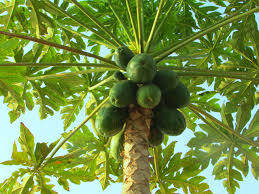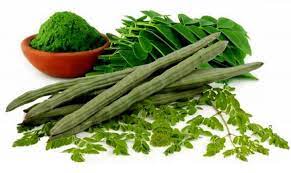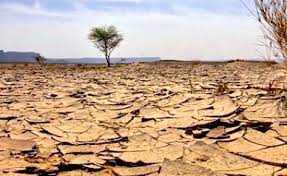
Nigeria is a country that is blessed with a diverse agricultural industry. With its vast arable land, good climate, and abundant natural resources, it has the potential to become a major player in the global agricultural market. One of the most promising crops for farmers in Nigeria is orange. Oranges are a valuable source of vitamin C and other essential nutrients.
They are also in high demand both locally and internationally. This article will provide a comprehensive guide on how to start orange farming in Nigeria.
Oranges are a fruit that has a lot of benefits. They are a rich source of vitamin C, dietary fiber, and other essential nutrients. Oranges also contain phytochemicals that have antioxidant properties. These phytochemicals are beneficial in reducing the risk of chronic diseases like cancer, heart disease, and diabetes.
Another advantage of orange farming is that oranges are in high demand in Nigeria and other countries. The demand for oranges is expected to increase in the coming years, as people become more health-conscious and aware of the benefits of eating fruits. Oranges are also used in the production of other products like orange juice, marmalade, and cosmetics. These products have a huge market both locally and internationally.
Starting an orange farm in Nigeria requires careful planning and preparation. Here are the steps to follow to start an orange farm in Nigeria:
Step 1: Conduct a feasibility study
Before starting an orange farm, it is important to conduct a feasibility study. A feasibility study will help you to determine the viability of the business, the costs involved, and the potential risks. You should consider factors such as soil type, climate, market demand, competition, and government regulations. A feasibility study will help you to make informed decisions about starting an orange farm.
Step 2: Choose a suitable location
The first step is to get suitable land with suitable soil for orange farming. Sandy-loam soil is the best for the cultivation of oranges. Also, a significant factor to be considered while choosing a site should be water retention.
A good land for orange farming should be able to absorb water quickly; otherwise, such a site is not suitable for orange farming. The selected location should also be in a secure environment. You should consider fencing the land to ward off animals, pest attacks and thieves.
Land Preparation: This process is carried out to prepare the selected site for farm operations. It involves clearing bushes, removing tree stumps, trees, stones, rocks, and all other items that may stall the germination and growth of the oranges.
More so, it is necessary to remove every tree that would form shades for the young plants. This is because orange plants do not need shades. At this stage, you should apply fertilizers or manure to enhance soil fertility.
Step 3: Obtain the necessary permits
Starting an orange farm in Nigeria requires obtaining the necessary permits from the government. You will need to register your farm with the appropriate government agencies and obtain permits for land use, water use, and other activities related to farming.
Step 4: Choose the right orange variety
Nigeria is home to a wide variety of oranges, ranging from sweet oranges to sour oranges. The most common types of oranges grown in Nigeria are the Valencia and the Hamlin oranges. Valencia oranges are sweet and juicy and are usually used for juicing, while Hamlin oranges are smaller and sweeter and are commonly used for eating.
Other types of oranges grown in Nigeria include the Navel, Pineapple, and Blood Orange. Navel oranges are characterized by their thick skin, which is easy to peel, and their sweet, juicy flesh. Pineapple oranges have a distinctive pineapple-like flavor, while blood oranges have a deep red flesh and a tangy flavor.
To get seedlings for transplanting, fill polythene bags with sandy loam soil and perforate the polythene for drainage. Dig a hole half (½) inch, drop two to three (2-3) seeds into it and cover lightly.
Orange seeds and the likes grow within fourteen (14) days. Transplant them to the main field between three to four (3-4) months. The price of seedlings is about one thousand, five hundred naira (N 1,500). A plot can accommodate fifty (50) stands.
You can buy seedlings from people who are into a nursery or you cultivate them yourself. If you are doing it alone, get orange seed or any citrus seed, dry them under the sun.
Step 5: Agricultural Practices
PLANTING - Dig hole sixty by sixty (60x60) cm and give a space of three point three by three point three (3.3 by 3.3m) (10ft) between the next plant. This is to give them enough space to spread out as the nature of the plant is. Align the trees in a straight row and across (in rows). Planting should be done when the rains are just starting.
Remove the nursery bag and position the seedlings at the centre of the dug hole. Cover the hole with loamy soil before putting the under soil (sandy) which you dug out. Make the the place fiirm for quick establishment.
Keep the budded area above the ground to avoid infection . Cover the soil up to the actual level of the nursery sleeve. Ensure you stake the seedling to keep it erect while growing.
Oranges can be grown from sea level to two hundred (200) meters above sea level. It is more preferable to propagate them (vegetative budding). This is due to the fact that budded seedlings are grafted from alreay existing tree which can sustain its properties. And will take very short time to mature.
CLIMATIC REQUIREMENT - High temperature or low humidity is good for orange growth. Because it will reduce disease intensity while giving the orange fruit good colour.
Cold temperature at night and hot temperature in the day gives a good colour development. The ideal temperature for orange are between 13°C to 38°C . Optimum temperature should be 25°C to 35°C. Extreme high temperature is bad during flowering or when cold temperature follow a hot period. This will result in leaf and flower droppings.
FERTILIZER APPLICATION - NPK should be applied twice or thrice within a year at the rate of half (1/2) kilogram for each plant, keep increasing it every year by two point five percent (2.5%) during raining season every year. Muriate of potash increases citrus fruit sweeteners so it should be applied at seven hundred and fifty (750) grams every year.
PRUNNING - Pruning is an essential practice in orange cultivation, as it helps to maintain the size and shape of the tree, remove dead or diseased branches, and promote fruit production. In Nigeria, farmers prune their orange trees once a year during the dry season.
IRRIGATION - Water the farm adequately avoid over wstering. Ctrus crops are highly exposes to root rot especially when they are intercropped with other crops. Precaution: do not plant the intercrop plants close to the citrus stalks.
Step 7: Pest and Diseases
Some Pests of Orange Trees
Citrus Leaf Miner: The citrus leaf miner is a small moth whose larvae feed on the tender new growth of citrus trees, including orange trees. This can cause distorted leaves and reduce the overall growth and vigor of the tree. The larvae also create tunnels in the leaves which can lead to fungal infections. To manage citrus leaf miner, it is important to prune affected branches and remove any fallen leaves. Insecticides can also be used to control the moth population.
Citrus Red Mite: The citrus red mite is a common pest of orange trees in Nigeria. These tiny red mites feed on the leaves of the tree, causing them to turn yellow and drop prematurely. In severe infestations, the mites can also damage the fruit. To manage citrus red mite, it is important to keep the tree well-watered and to remove any fallen leaves. Insecticides can also be used to control the mite population.
Fruit Flies: Fruit flies are a major pest of oranges in Nigeria, as they lay their eggs on the fruit and the larvae feed on the flesh, causing it to rot. To manage fruit flies, it is important to pick ripe fruit as soon as possible and to dispose of any fallen fruit. Traps can also be used to capture adult fruit flies, and insecticides can be used to control the population.
Scale Insects: Scale insects are a common pest of orange trees in Nigeria. These small insects attach themselves to the bark and suck sap from the tree, causing the leaves to turn yellow and the fruit to drop prematurely. To manage scale insects, it is important to prune affected branches and remove any fallen leaves. Insecticides can also be used to control the population.
Some Diseases of Orange Trees
Citrus Canker: Citrus canker is a bacterial disease that affects the leaves, fruit, and twigs of citrus trees, including orange trees. The disease causes lesions on the leaves and fruit, and can cause premature fruit drop. To manage citrus canker, it is important to prune affected branches and remove any fallen leaves. In severe cases, the tree may need to be removed and destroyed.
Gummosis: Gummosis is a fungal disease that affects the bark of citrus trees, including orange trees. The disease causes the bark to split and ooze sap, and can cause dieback of the tree. To manage gummosis, it is important to prune affected branches and remove any fallen leaves. Fungicides can also be used to control the disease.
Alternaria Brown Spot: Alternaria brown spot is a fungal disease that affects the fruit of citrus trees, including orange trees. The disease causes brown spots on the fruit and can cause premature fruit drop. To manage alternaria brown spot, it is important to prune affected branches and remove any fallen fruit. Fungicides can also be used to control the disease.
Phytophthora Foot Rot: Phytophthora foot rot is a fungal disease that affects the roots of citrus trees, including orange trees. The disease causes the roots to rot, leading to stunted growth and premature fruit drop. To manage phytophthora foot rot, it is important to improve drainage around the tree and to avoid overwatering. Fungicides can also be used to control the disease.
Steps: Maturity and Harvesting
It takes a long time for orange to produce fruit when raised from seed (8-13 years). While vegetative propagation of seedlings takes about two to three (2-3) years to fruit.
Budded citrus plant can start producing in 3 years from the time of transplant. Orange stays on the tree from 6-9 months depending on the variety and climatic conditions.
When the colour of orange fruit changes or it becomes yellowish in colour it a sign that it is ready for harvest. Citrus crops can be harvested by hand plucking, pulling and clipping from the tree. Put them inside basket or bag to avoid their contact with the ground in other to reduce infection.
Full productivity will be attained in ten (10) years. Average yield for a hectare is between ten to twelve (10-12) tons yearly. But this can be achieved when; good management practice are adopted. And can even increase to forty (40) tons per hectare. One tree can produce about one hundred and twenty (120) kilograms every season. Most citrus fruits bear fruits two (2) times in a year.
Owning to the numerous products (juice, orange oil etc) that can be gotten from oranges and the demand for these products, orange cultivation in Nigeria is a very profitable business and would earn the investors lots of money and create job for our youths.






















